Do you want to learn more about restaurant email marketing? Not sure where to start?
Many people think that email marketing is only for large tech and SaaS companies. Local businesses like restaurants rely more on traditional advertising methods, such as handing out flyers or posting pamphlets around their neighborhoods.
But email marketing can help any kind of business grow if you follow the right email marketing best practices.
In this post, I’ll share 9 restaurant email marketing strategies to help you drive more footfall to your business.
Before we get started, here’s a short primer on why email marketing for restaurants is important.
Restaurant Email Marketing: Why It Matters
Email marketing can give you a significant edge over your competition. Many restaurant owners think that email marketing belongs in the confines of Silicon Valley.
But they are wrong to overlook email marketing’s impact. Here are some impressive statistics about how email marketing can help restaurants:
- The average email open rate in the restaurant industry is 18.5%.
- 49% of customers want weekly promotional emails from preferred brands.
- 70% of customers are more likely to visit restaurants that offer personalized promotions.
When you have your customers’ email addresses, you can keep them coming back to your restaurant. You can do this by sending email campaigns that:
- Inform customers about upcoming special events.
- Gather feedback about your customers’ experience.
- Send personalized offers for birthdays and anniversaries.
- Market new menu items or recipes your restaurant is launching.
- Schedule automated email newsletters to engage loyal customers.
- Talk about special offers such as discounts on takeout or online orders.
Email marketing is one of the few channels that gives you direct access to your customers. It’s also more time- and cost-effective than other digital marketing channels.
For instance, social media requires you to post regularly and engage with followers in real-time. Paid ads demand recurring investments to hit your marketing goals.
You don’t have those hassles with email marketing. You can automate your email marketing campaigns to save time and cost. You can also achieve great organic results without stretching your budget.
Next, let’s look at 9 restaurant email marketing strategies to grow your business.
9 Actionable Restaurant Email Marketing Tips to Drive More Business
- Grow Your Email List Faster
- Create Lead Magnets
- Find the Right Email Marketing Software
- Send Weekly Promotions
- Target Your Ideal Audience
- Collect Customer Feedback
- Use Email With Other Marketing Channels
- Optimize Everything With A/B Testing
- Clean Your List Regularly
1. Grow Your Email List Faster
For a restaurant email marketing strategy to work, you first need an active email list: a database of email subscribers who have signed up to receive emails from you.
Growing an email list is like a marathon, not a sprint. It takes careful planning and a long time to build an enviable email list.
But you can drastically speed things up by having the right tools. And that’s where OptinMonster comes in.
OptinMonster is hands down the best lead generation software to help restaurants with email marketing. The tool allows you to build high-performing optin campaigns for your restaurant’s website in a matter of minutes.
Optin campaigns refer to popups, floating bars, notification bars, and other marketing campaigns that can help you generate more leads for your business.
You’ve likely seen these campaigns before. They look something like this:
Once website visitors click ‘Enroll Now and Save,’ they’ll be asked to sign up with their email address. Then, you’ll have a new subscriber on your list.
I built this campaign from one of OptinMonster’s standard drag-and-drop templates, without changing anything in it. OptinMonster has 100+ ready-to-use templates to save you from the hassle of designing a campaign from scratch.
But is building an email list any good for restaurants? In short, yes.
Guido’s, an authentic Spanish and Italian restaurant, used OptinMonster to add over 1000 email subscribers to their list in just 4 months. They also converted 16.74% of their site visitors into customers, driving more revenue to their business.
With OptinMonster, you can target (and retarget) your email sign-up campaigns to the right people, in the right places, and at just the right time in their customer journey.
OptinMonster comes with powerful targeting rules like:
- Exit-Intent® Technology: Capture visitors as they’re about to leave your website.
- Page-Level Targeting: Target specific URLs or categories on your site.
- Geo-Location: Display popups to people from specific regions to make sure you’re only getting local customers.
- MonsterLinks™: Turn any button or clickable link into a campaign.
- HTML Elements: Add HTML codes for advanced-level campaign personalization and targeting.
Want to build your own email list? Join OptinMonster risk-free with our 14-day money-back guarantee.
2. Create Lead Magnets
One of the fastest ways to grow your restaurant’s email list is by offering first-time site visitors an incentive to sign up with a lead magnet. A lead magnet is a valuable offer that website visitors get only after they sign up for your email list. Some popular lead magnets for restaurants may include:
- Recipe books
- Informative guides
- Discounts and coupons
- Opportunity to win free dinners
- Best-of guides for wines or wineries
- Free membership in a loyalty program
Here’s an example of a lead magnet from Albion’s Restaurant. The restaurant offers its customers a free bottle of wine if they sign up for the restaurant newsletter and spend at least £50 on their next visit.
Not sure about what lead magnet ideas you should go for? Check out our guide of 63 highly effective lead magnet ideas to grow your email list.
Persuading your website visitors to subscribe to your mailing list becomes a breeze when you have the perfect lead magnet.
Once people start signing up for your emails, you’ll need to store their information in a safe database. And you’ll need to be able to send marketing emails to those addresses. That leads us to our next strategy.
3. Find the Right Email Marketing Software
Choosing the right email marketing service is extremely important to growing your email list.
Email marketing software lets you send automated emails based on specific triggers, schedules, or conditions, without manual intervention.
With an email marketing service, you can store and organize your email list segmentation. It also lets you create email templates, send marketing campaigns to your prospects, and nurture leads to convert them into paying customers.
From sending the first email to scheduling promotional offers during holidays, an email marketing platform lets you manage the entire cycle of your email marketing campaigns.
You can also deliver highly-personalized emails based on customer data.
This means using the right email marketing automation tool can help you save time, offer a better user experience (UX), and improve sales.
There are several options you can choose from, but here are our top picks:
- Constant Contact: An excellent solution for small businesses who want to start small and scale later.
- Brevo: The perfect software for businesses who want to run marketing campaigns across email, SMS, and chat from under the same roof.
- ActiveCampaign: One of the best email service providers with advanced personalization features.
All of these services offer free trials. You can try them out before settling for the right email marketing platform. If you want more options, choose from our list of the best email service providers for small businesses.
Pro-tip: With OptinMonster, you have another alternative to manage your lead data, even if you don’t have email marketing software or you don’t want to invest in one right now.
When you start using OptinMonster, you get free access to Monster Leads to store your email list information. Monster Leads is a built-in feature in OptinMonster that lets you store your lead data, export it, and send individual emails from your existing email client.
You can integrate your campaigns to Monster Leads by following the below steps:
- Log in to your OptinMonster account.
- Go to the Integrations tab.
- Search for ‘Monster Leads.’
- Follow the instructions on the screen to connect Monster Leads with OptinMonster.
4. Send Weekly Promotions
Once you’ve grown your email list, now it’s time to use it to drive business. But how?
By sending promotional content that your audience will love. Papa Murphy’s offers a great restaurant email marketing example.
Here’s a Valentine’s Day promotion that the pizza chain sent out:
While this example is from a holiday promotion, Papa Murphy’s sends weekly email promotions to improve customer loyalty. They often include coupons for $5 off or a discount of 20% on orders over $30.
The result is always the same: giving customers a good reason for visiting the restaurant increases the chances that they actually will.
You don’t always have to offer heavy discounts to make this idea work. A lot of restaurants drive foot traffic by offering personalized promotions, such as sending birthday emails or sharing details about new menu items and upcoming events.
Or it can be as simple as offering free wi-fi to patrons during their restaurant visit. You can also include QR codes in your email to boost conversion. Research shows that 45% of buyers scan a QR code to apply promotional offers.
The point is to use your email list to send out regular promotions to drive more sales.
And promotions are even better when you personalize them for relevance.
For example, why should Papa Murphy send promo emails to people in New York City or Philadelphia, where they don’t have any restaurants? It’s a waste of time and misleads people instead of personalizing their experience.
In the next section, we’ll cover how to target the right customers for your local restaurant.
Pro-tip: Want more inspiration on how to use promotions to drive up sales? Read our post on discount code ideas to improve conversions.
5. Target Your Ideal Audience
The size of your target audience will depend on the nature of your restaurant.
If you’re a large franchise with multiple chains, your target audience is much bigger than if you’re a local restaurant in a single city.
For big restaurants, your ideal audience is simple: people who eat food in or around cities where your restaurants are based.
The targeting for the above use case is also simple. You can create limited-time offers (e.g., happy hour discounts or 2-for-the-price-of-1 meals) that apply to all your restaurant branches.
But what about small businesses? How do you target people who stay within the 50-mile radius of your restaurant?
For this, you can leverage OptinMonster’s Geo-Location Targeting feature.
This feature allows you to display (or hide) your optin campaigns based on where your users are physically located. That means you can target people only in the town your restaurant is located in.
Setting this up in OptinMonster is really easy. You just have to follow the steps below:
Step 1: Login to your OptinMonster account and click on the Display Rules tab.
Step 2: Click on the Edit button. This will bring up the ruleset options.
Step 3: Next, select Who (Personalization) from the dropdown menu and click on Physical Location on the right.
Step 4: Enter the city or region you want to target. Click on the Validate button to ensure you have entered a valid location.
Step 5: Save the ruleset and publish the campaign.
Once you publish the campaign, it’ll only display in the regions you’ve specified.
With this, you’ll ensure that only California residents will now see your campaign. They are more likely to walk into your restaurant after seeing your campaign rather than someone 100 miles away in a different city or state.
Pro-tip: Geo-location targeting doesn’t automatically segment your email list. To create a new list from your geo-location targeting campaign, learn how to build a brand new email list from scratch.
6. Collect Customer Feedback
Using your email list to get customer feedback can be extremely valuable, but it’s an often overlooked strategy.
Getting your customers’ opinions on how they perceive your restaurant brand can help you build stronger relationships with your customers. And if you can act on their feedback to offer a better dining experience, you’re likely to have patrons coming back to your restaurant repeatedly.
The best way to know what your customers want or like? Just ask them.
Well-known brands like KFC routinely send email surveys to customers to feel their pulse:
To improve your customer relationship, use your email list to send out surveys asking your customers what they like (or don’t like) about your restaurant. Here are a few best practices to keep in mind when you do:
- Keep It Short: Keep survey forms short, simple, and limited to 3-5 minutes. If you make your survey forms too long, you’ll turn off customers and ruin their customer experience.
- Make It Timely: Schedule your email surveys to go out after their recent restaurant visit. When customers receive surveys out of the blue, they might find it irrelevant and will likely skip it.
- Give Them a Reason to Say “Yes”: Give customers an incentive to fill out your survey. Offer a discount or free appetizer on their next visit to get more people to fill out the survey. This will also help you drive more foot traffic to your restaurants!
The last tip is essential. Remember, your customers don’t owe you anything. If they’ve dined at your restaurant and paid their bill, they have no obligation to keep engaging with your business.
Offering them a reward to fill out the survey shows that you respect their time and feedback.
More importantly, getting your customers’ feedback helps you re-engage them more meaningfully and increase profits in the long run.
Pro-tip: If you want to leverage customer feedback, there’s more than 1 way to do it well. Read our guide on the best ways to collect customer feedback on your website.
7. Use Email With Other Marketing Channels
Many small business owners make the mistake of thinking that marketing strategies are mutually exclusive. They assume they need to do either email marketing or social media marketing to grow their restaurant’s foot traffic.
But in the world of digital marketing, the lines between different marketing tactics are a lot blurrier than you think. To get an edge over your competition, you should invest in multiple marketing efforts to generate more leads.
The good news is that email plays well with other marketing channels.
Adùn, an African restaurant in Texas, offers a great example of mixing email marketing with social media. It sends its subscribers a promotional email for its gift cards.
The restaurant also uses Facebook to promote the gift cards for wider coverage.
You can use both channels to set up retargeting rules and improve your conversion rates.
<strong>What is retargeting?</strong> Retargeting is a technology that lets you target repeat visitors with new promotions and offers based on their previous interactions on your site. For example, you can show them special promotions based on a customer’s age, gender, or location. With retargeting, you use the information you already have about customers to improve personalization, reclaim lost profits, and boost sales.
Retargeting lets you show ads to users, who opted in through one of the email marketing campaigns on your site, on social media platforms.
This is an excellent way to re-engage customers who didn’t convert on the first go.
Here’s how it actually plays out. When a first-time customer signs up for your restaurant newsletter, you can send them a welcome email offering them discounts on your restaurant gift card.
And for subscribers who don’t convert through that email, you can trigger retargeting ads on social media to re-market your gift cards.
If you’re thinking this is too technical for you, don’t feel overwhelmed. With OptinMonster, running retargeting campaigns is ridiculously easy.
Here’s a quick overview of how you can make it work perfectly in OptinMonster:
- Get a tracking pixel from paid ad platforms like Facebook or Google. For this example, let’s say it’s Facebook.
- Add the Facebook tracking pixel to your OptinMonster campaign.
- When users subscribe through the OptinMonster campaign, Facebook will show those new subscribers more targeted ads for your business in their social media feed.
- This helps you to drive awareness about your restaurant and increase its business.
For a better understanding of this topic, go through our post on how to create and install a Facebook pixel to run retargeting ads.
Once you know how to run retargeting campaigns on Facebook, you can apply the same idea to other paid ad platforms like Google Ads, Instagram, and LinkedIn.
Besides running retargeting campaigns, you can also also use social media to grow your email list. Or, you can use SMS campaigns to boost conversions and drive more sales.
8. Optimize Everything With A/B Testing
At this point, you’ve got a lot of your restaurant email marketing strategies dialed in. You know how to:
- Build an optin campaign with OptinMonster.
- Create a lead magnet to persuade people to sign up.
- Target campaigns to people in a specific location.
- Send promotional deals to get more walk-ins.
- Gather customer feedback to improve sales.
With all these, you’ll start seeing things improve for the better. But you can’t just sit back and relax.
Optimization is the key if you want to make your restaurant email marketing campaign work. And the best way to optimize your email marketing success is with A/B testing, also known as split testing.
A/B testing lets you duplicate your optin campaigns so you can make and test minor changes to images, text, video, and call-to-action (CTA) buttons. Here’s a split testing example of 2 lead magnet offers, with a focus on testing the CTA button:
A/B testing experiments allow you to measure which version of the campaign performs better and replicate its success in your upcoming campaigns.
Over time, this will help you create high-quality marketing campaigns that guarantee leads and conversions.
But how to A/B test your campaigns without spending a lot of time? Once again, most leading email marketing platforms offer out-of-the-box A/B testing features:
- Constant Contact offers A/B testing specifically for email subject lines.
- GetResponse allows testing subject lines, images, email layouts, and CTA buttons.
- ActiveCampaign lets you test subject lines, email content, images, CTAs, and sender names.
Split testing your email marketing campaign lets you identify the gaps in your email conversions. It also helps you improve your email marketing metrics like open rates and click-through rates.
But what if you want to test your on-site email sign-up campaign (e.g. popup) to start with? OptinMonster makes this really easy.
You can split test any of your email optin campaigns with just a click of a button. Here are 3 steps how:
Step 1: Log in to your OptinMonster account and click on the Campaigns tab.
Step 2: Click on the campaign that you want to test.
Step 3: Click on the forked arrow icon on the right-hand side of the screen.
Step 4: Click on Create Split Test to start your experiment.
This will make a duplicate version of your campaign. You can then make changes to the:
- Headline
- Email content
- Image
- Sign-up field forms
- Email subject lines
- CTA button color
When the results are in, you can double down the campaign that’s converting the most and deactivate the other versions.
Want to learn more about how to make the most out of A/B testing to grow your list faster? Read our guide on the A/B testing best practices that you can apply to your campaigns.
9. Clean Your List Regularly
Cleaning your email list is more important than you might think. Here’s why:
Most email providers charge you by the number of contacts you have on your list (one exception is Brevo, which charges by emails sent).
If your list is full of contacts who aren’t the right fit or don’t engage with your emails, you should get them off the list. Otherwise, you’ll be paying for them to just sit there.
This is especially important in the restaurant industry. Out-of-town people who dine in your restaurant might never be able to visit you again.
Or you might have local customers move to another city where you don’t have a restaurant. Either way, you don’t want people on your list who aren’t engaged with your emails.
There’s another compelling reason to regularly clean your email lists. If too many people join your list without interacting with your messaging, your email deliverability rates will suffer, too.
Large email services like Gmail or Hotmail try to keep spam and promotional content from their users’ inboxes. They look for signals like your:
- Open rates
- Click-through rates
- Bounce rates
- Spam complaints
- Unsubscribe rate
- Deliverability rate
These metrics determine where your email ends up: your customer’s spam folder or their inbox.
By cleaning your list regularly, you can ensure your emails end up where they’re supposed to. Plus, it’ll help you engage with new customers and attract them to eat at your restaurant.
Get a Headstart With Restaurant Email Marketing
Now that you know the best restaurant email marketing ideas to grow your restaurant business, it’s time to put them into action.
But remember, you don’t have to apply everything at once. Approach your restaurant email marketing strategy like a four-course meal:
- Start small by launching an email optin campaign on your website.
- Next, build a segmented email list to offer relevant customer experiences.
- Once your lists get traction, offer discounts and promos to engage with customers.
- A/B test your campaigns and invest more in the ones that drive the highest conversions.
Eager to create your first email optin campaign? Sign up with OptinMonster today! Choose from over 100 design templates and launch your first email optin campaign within just a few minutes.
If you are interested in learning more about email marketing, you might like the following resources:

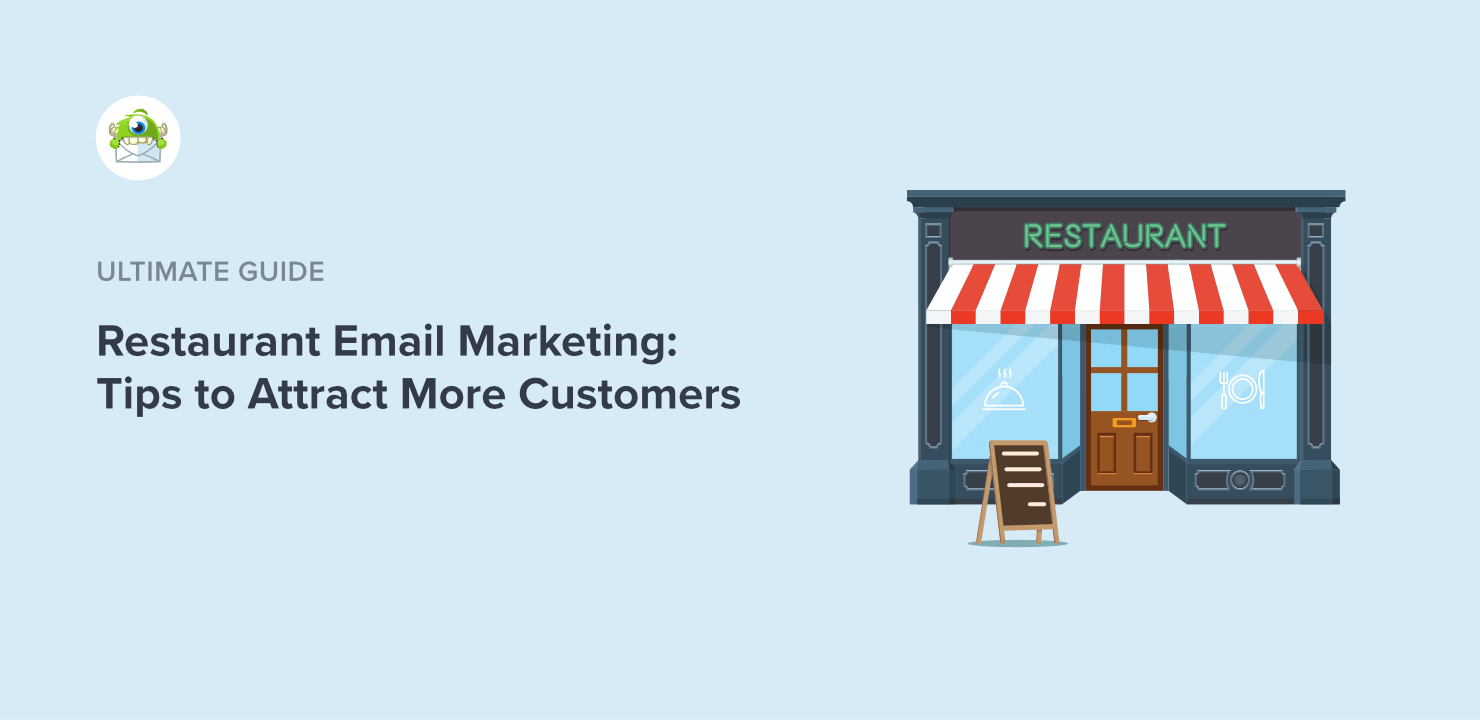
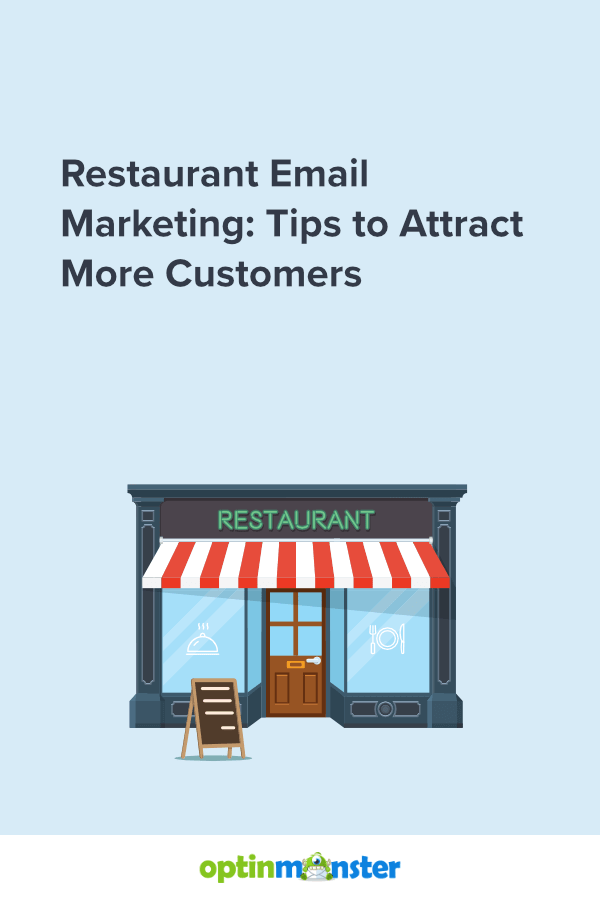


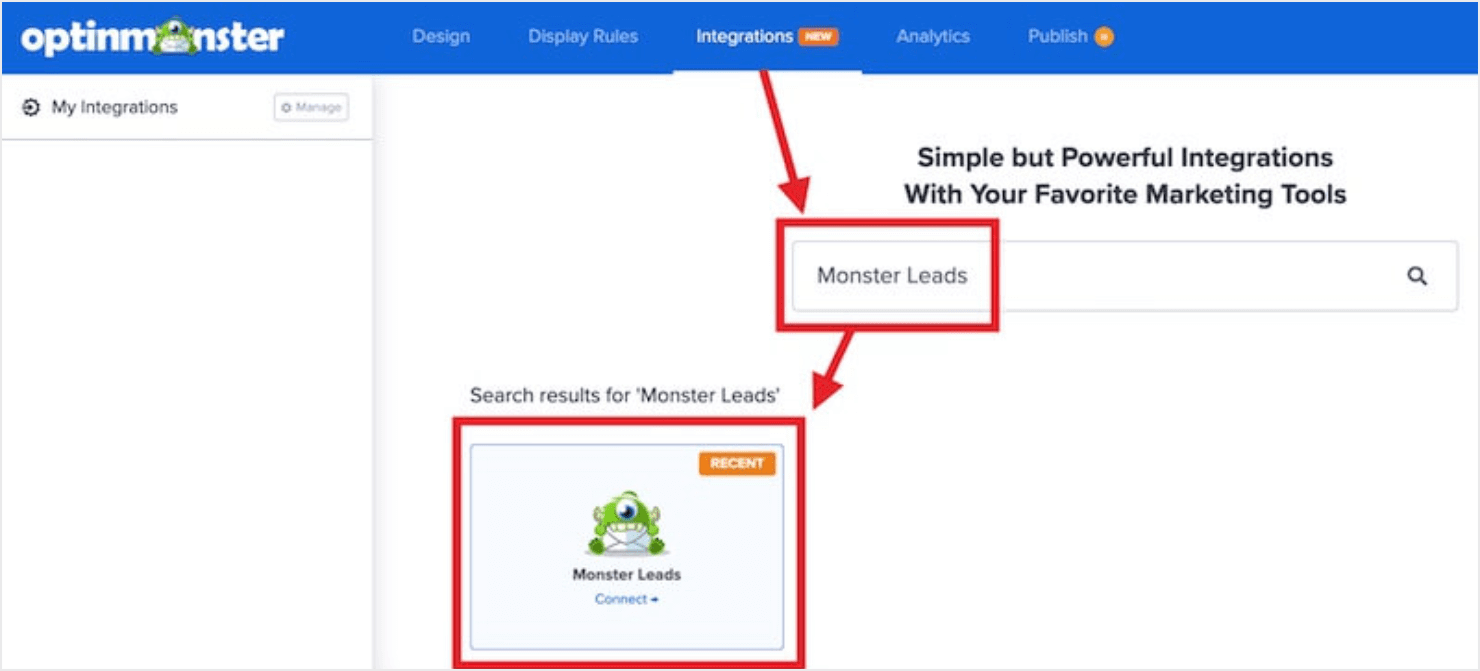
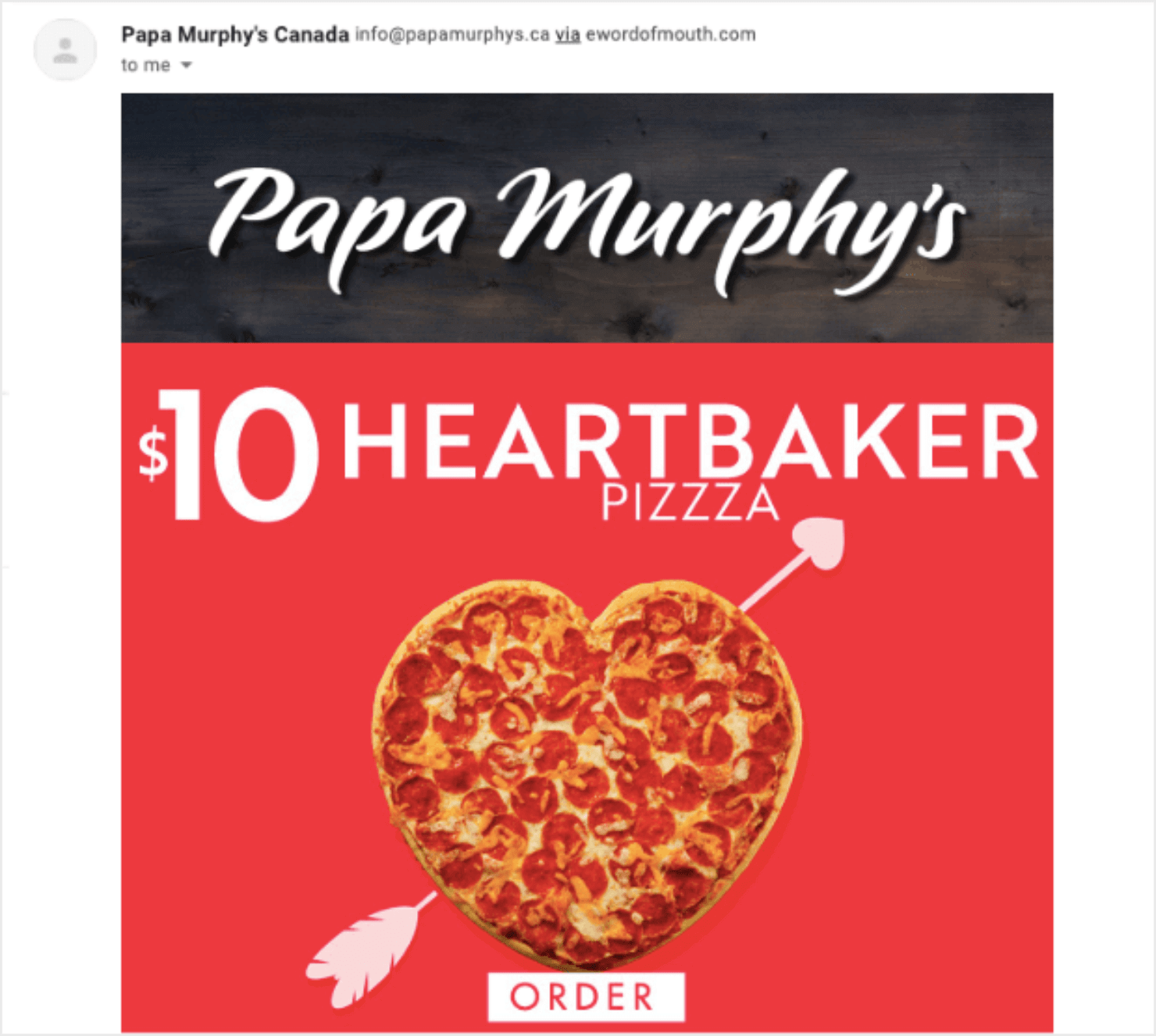


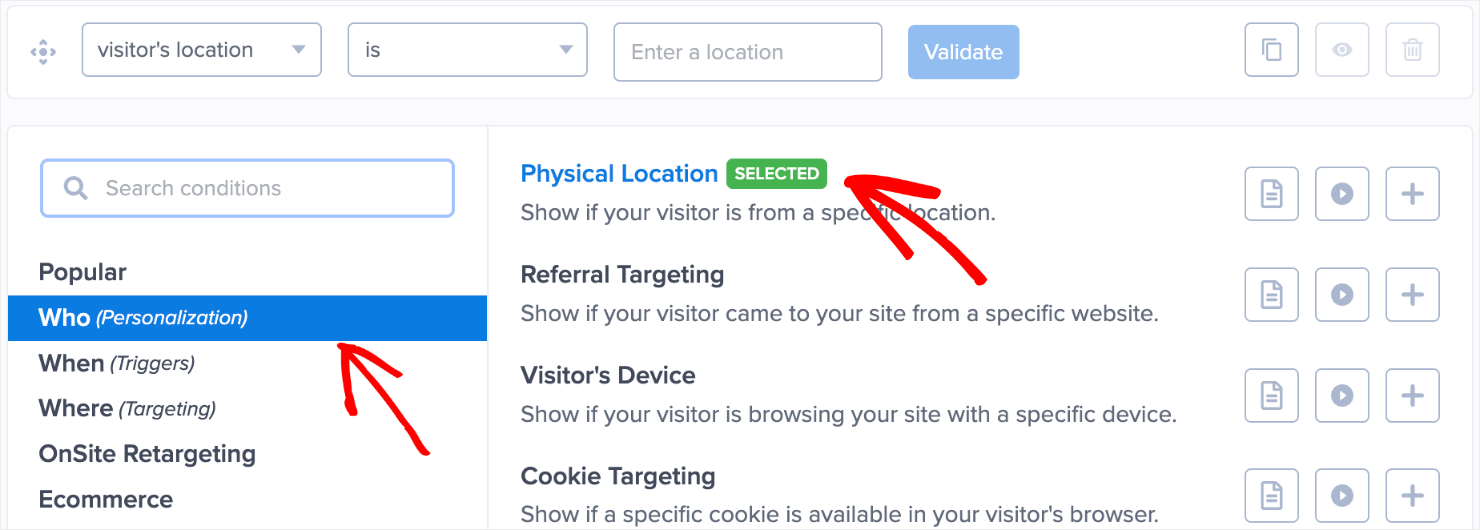


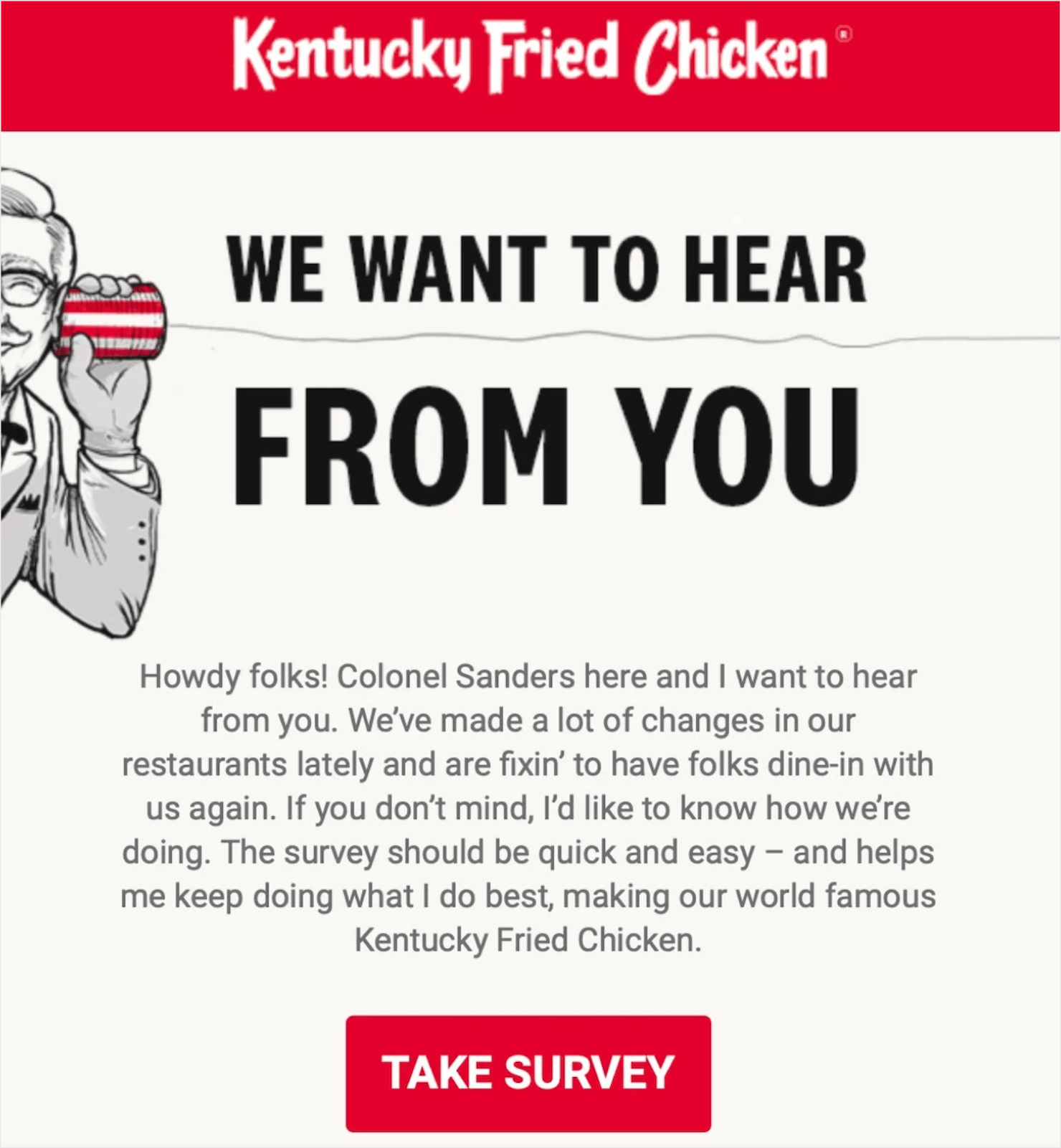
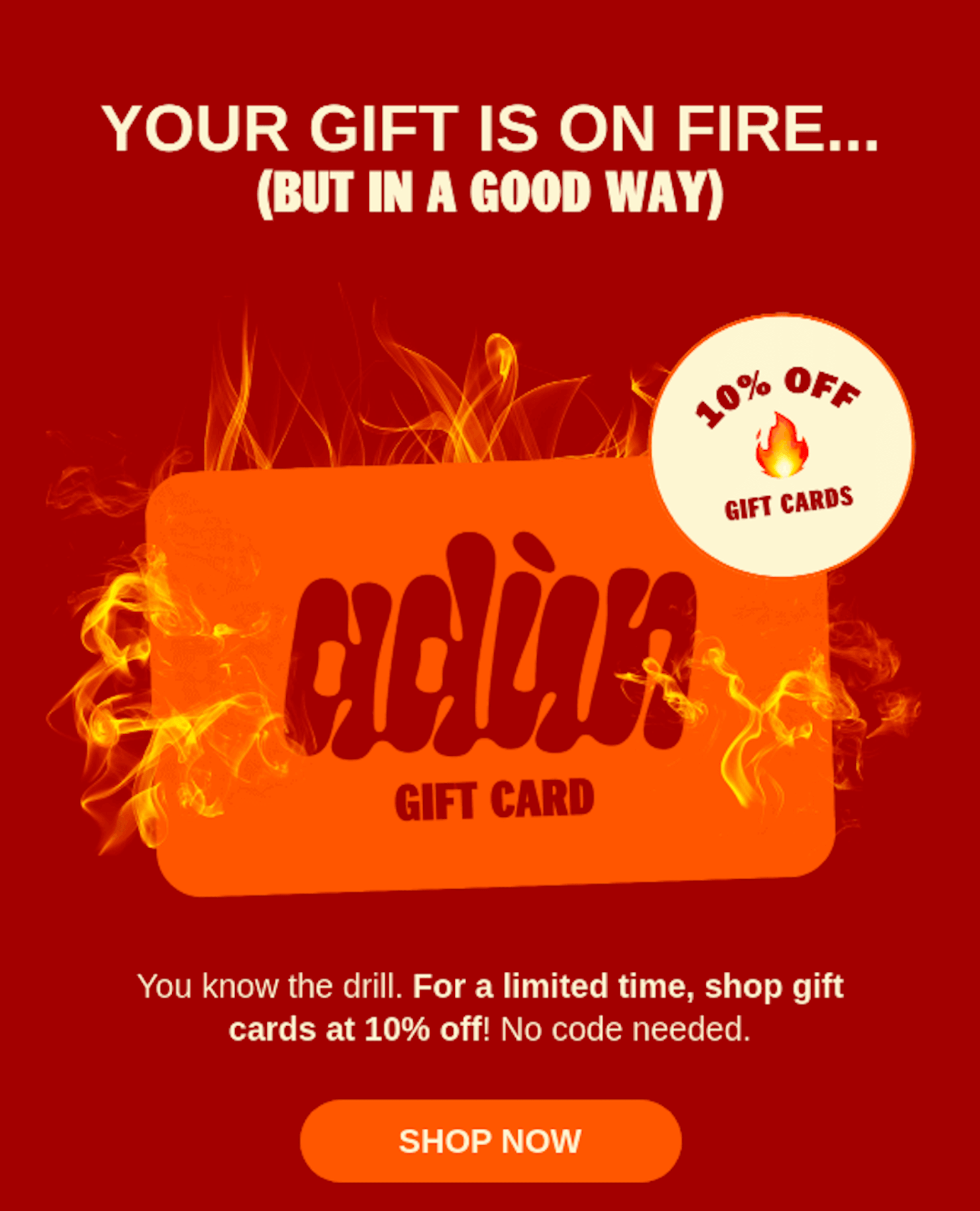
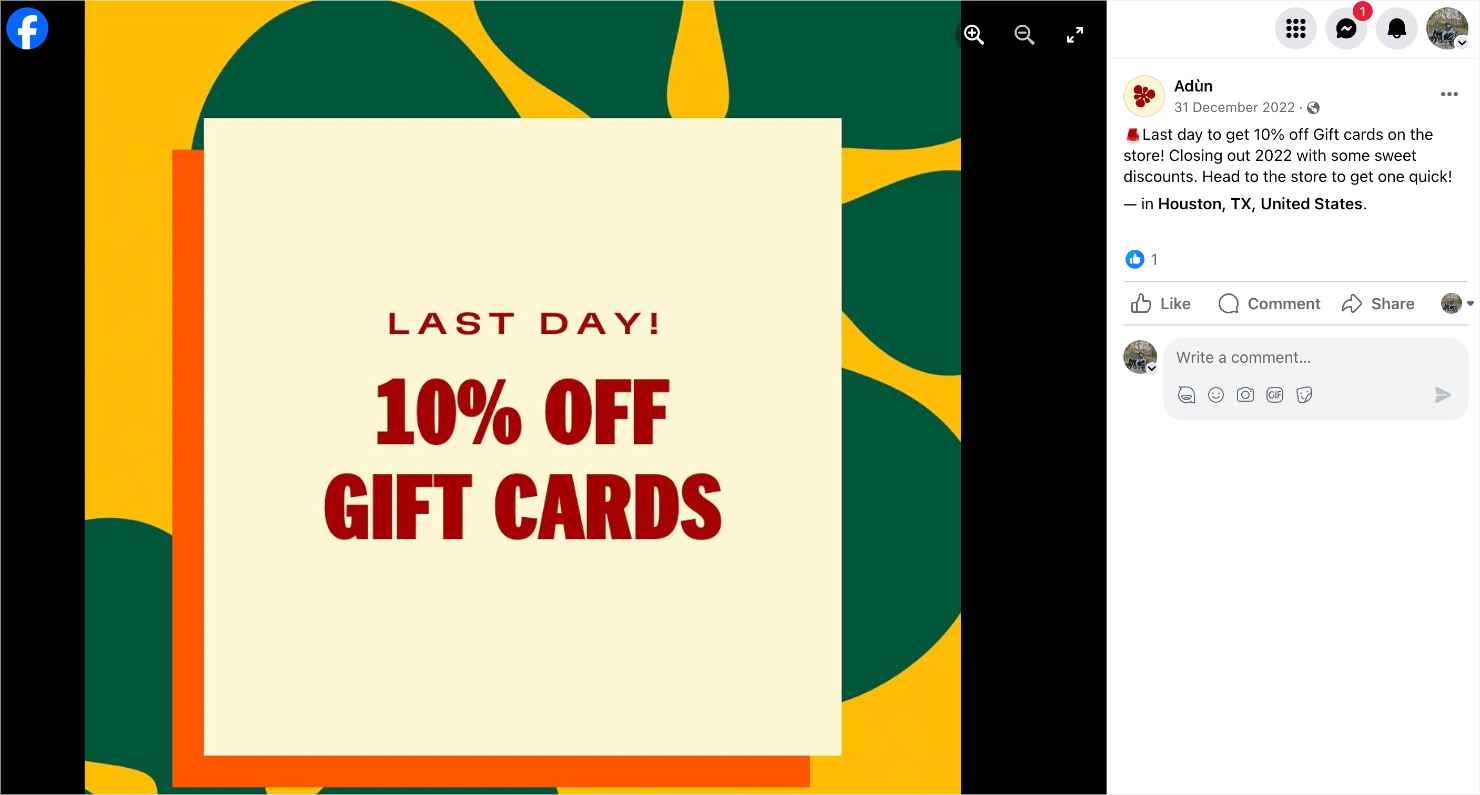


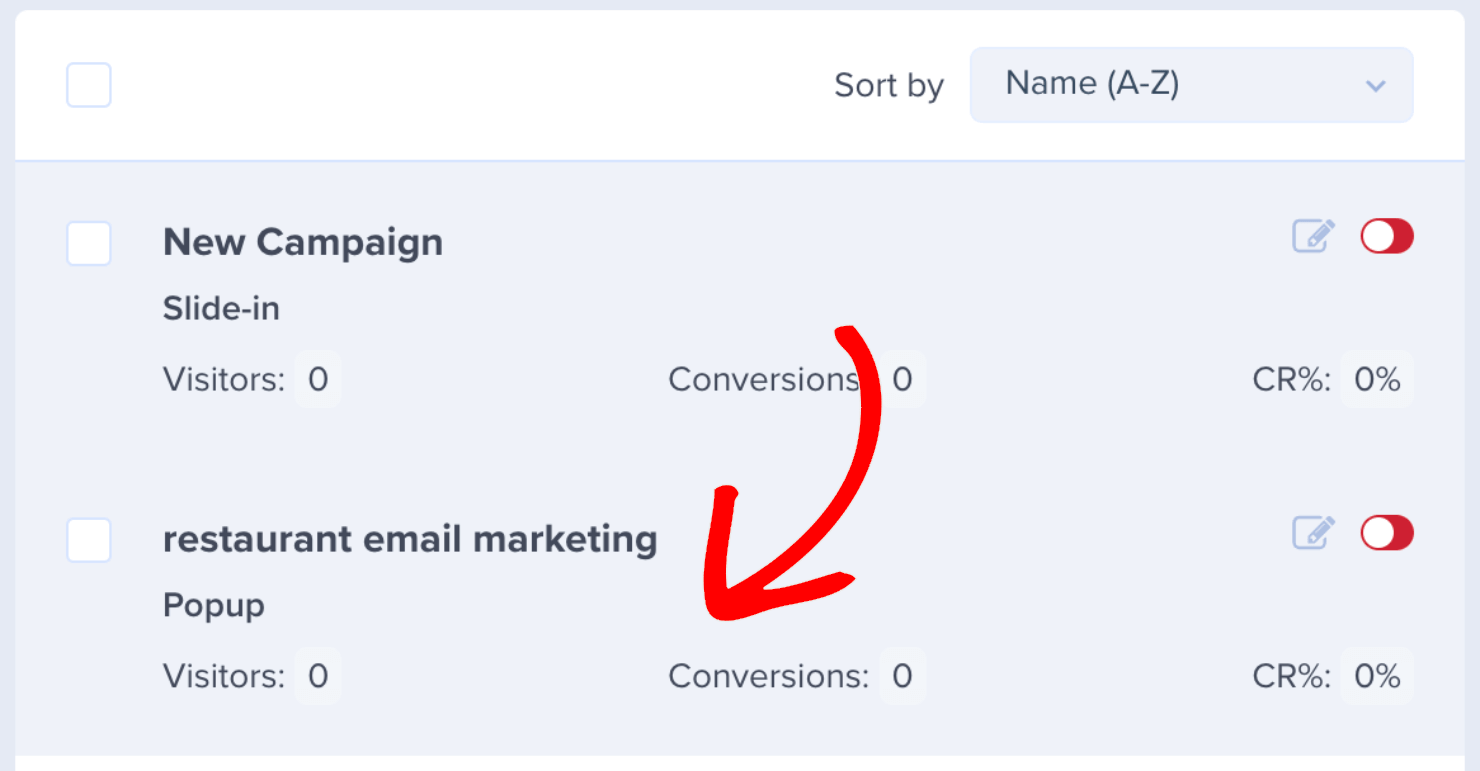
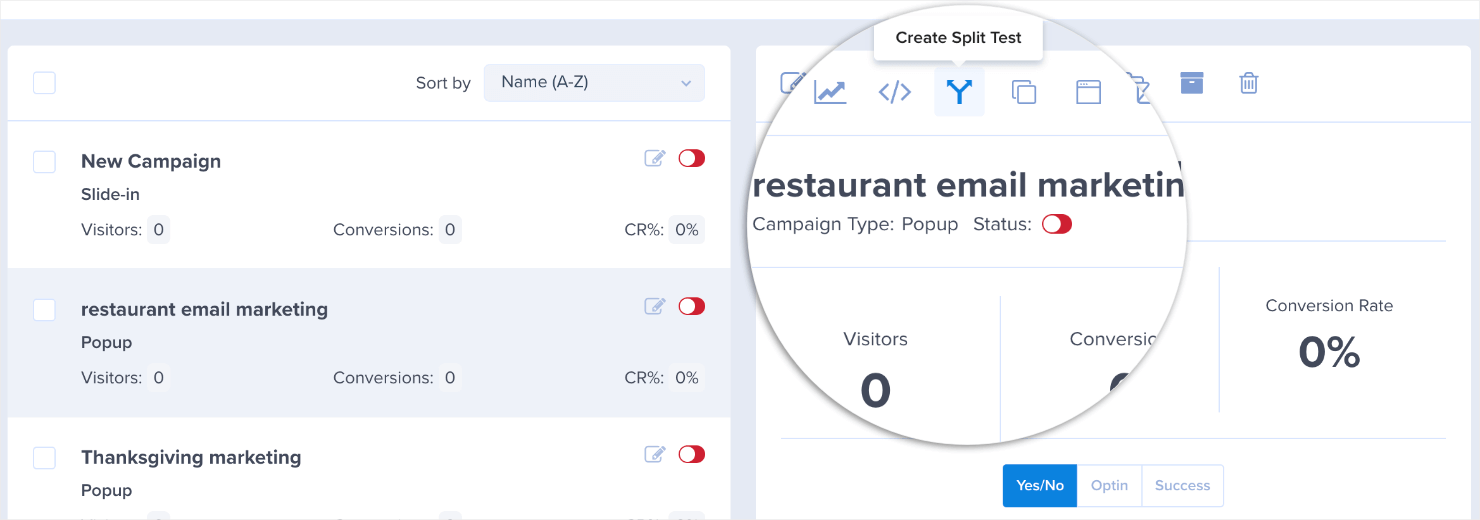
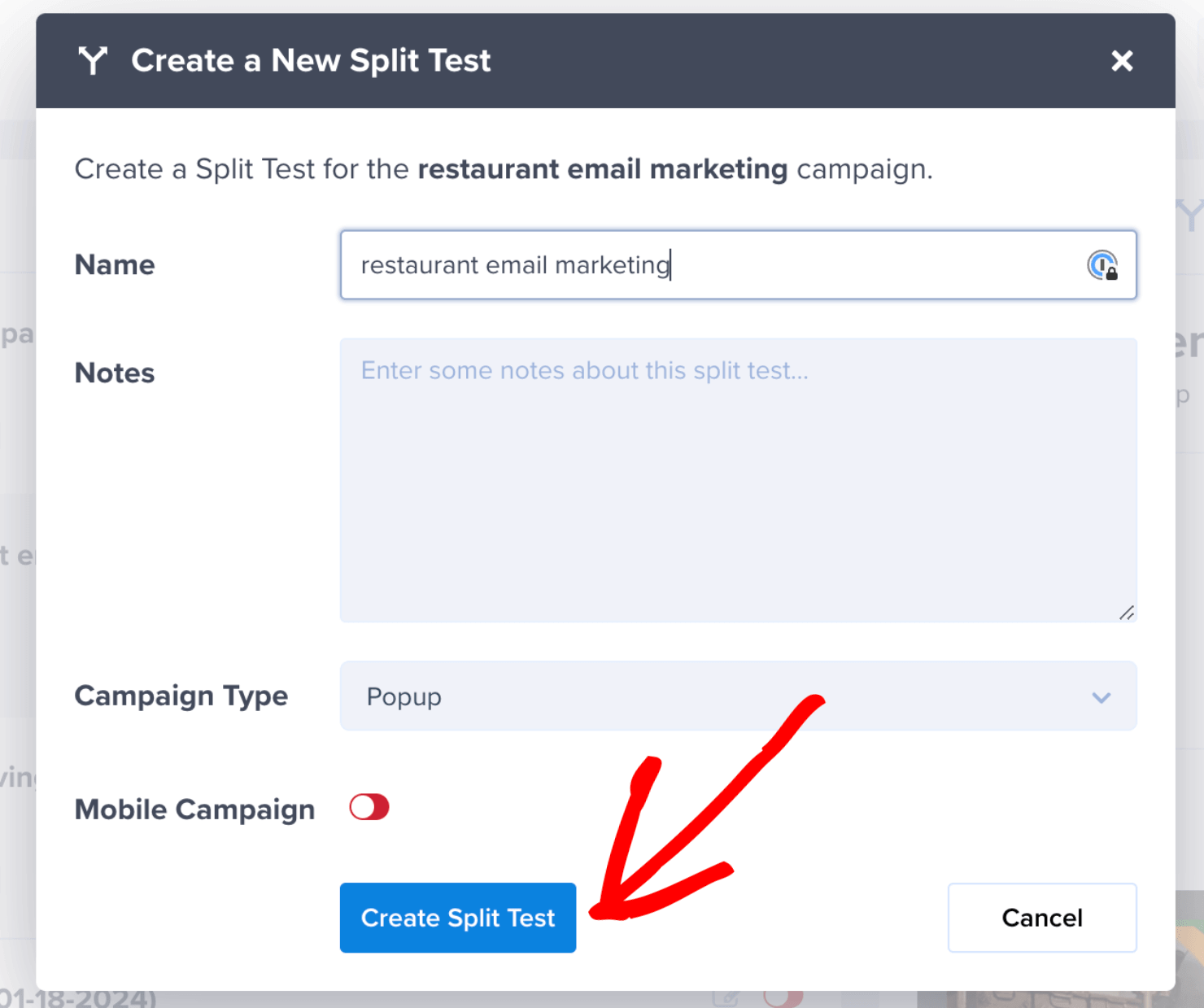








Add a Comment